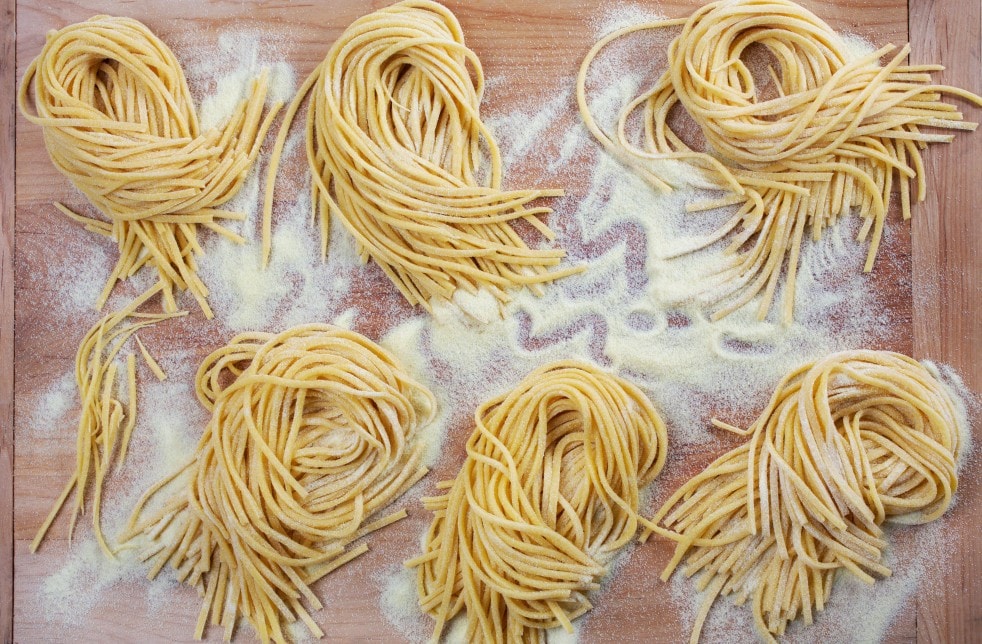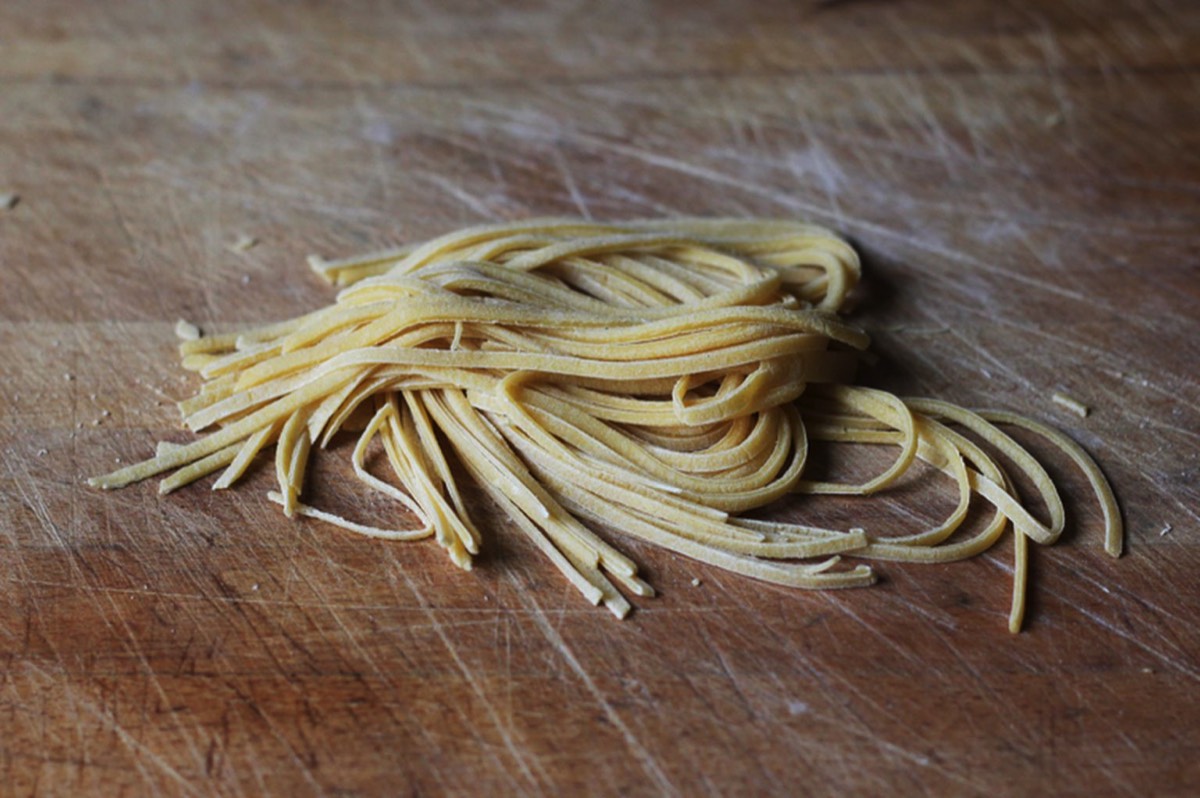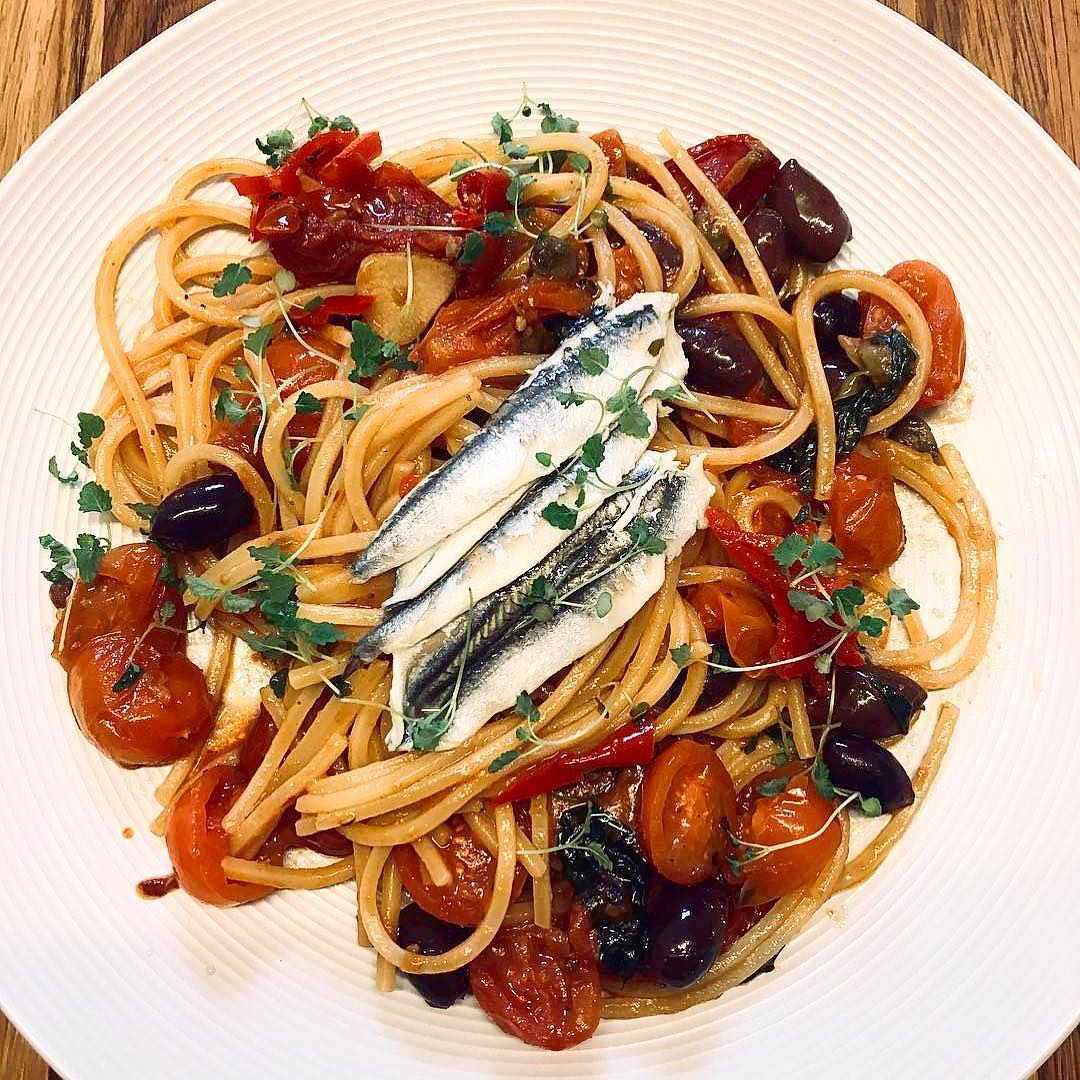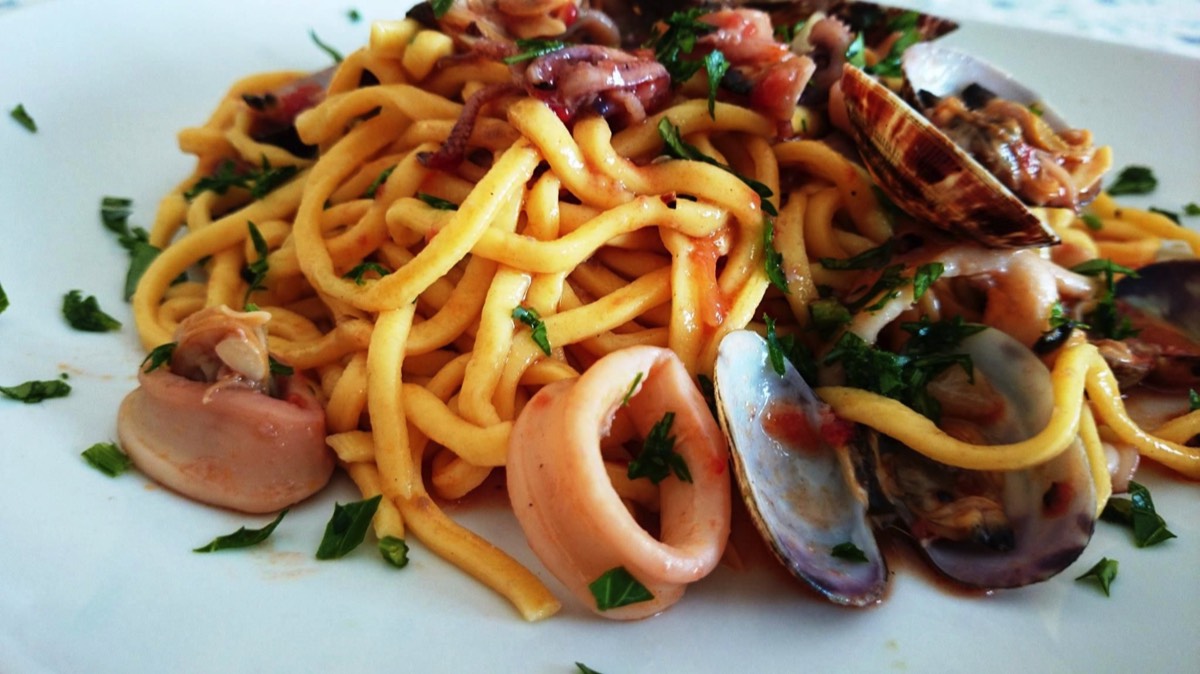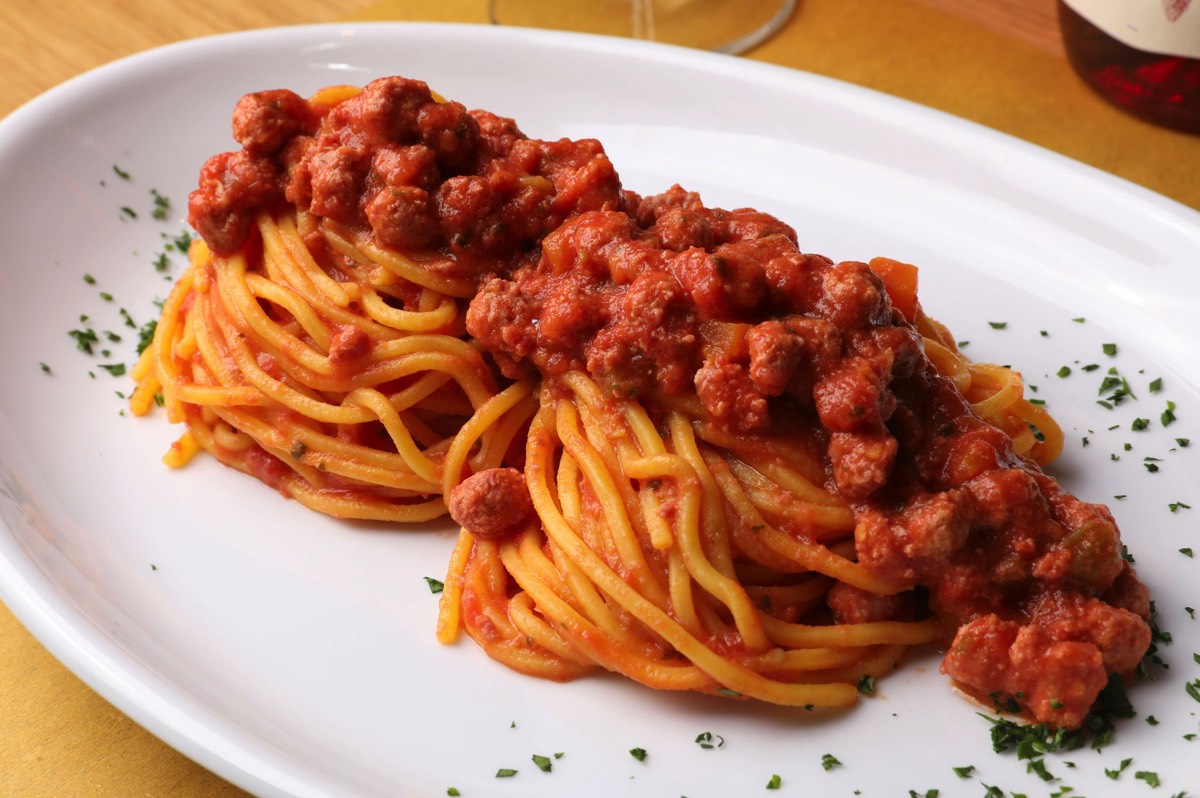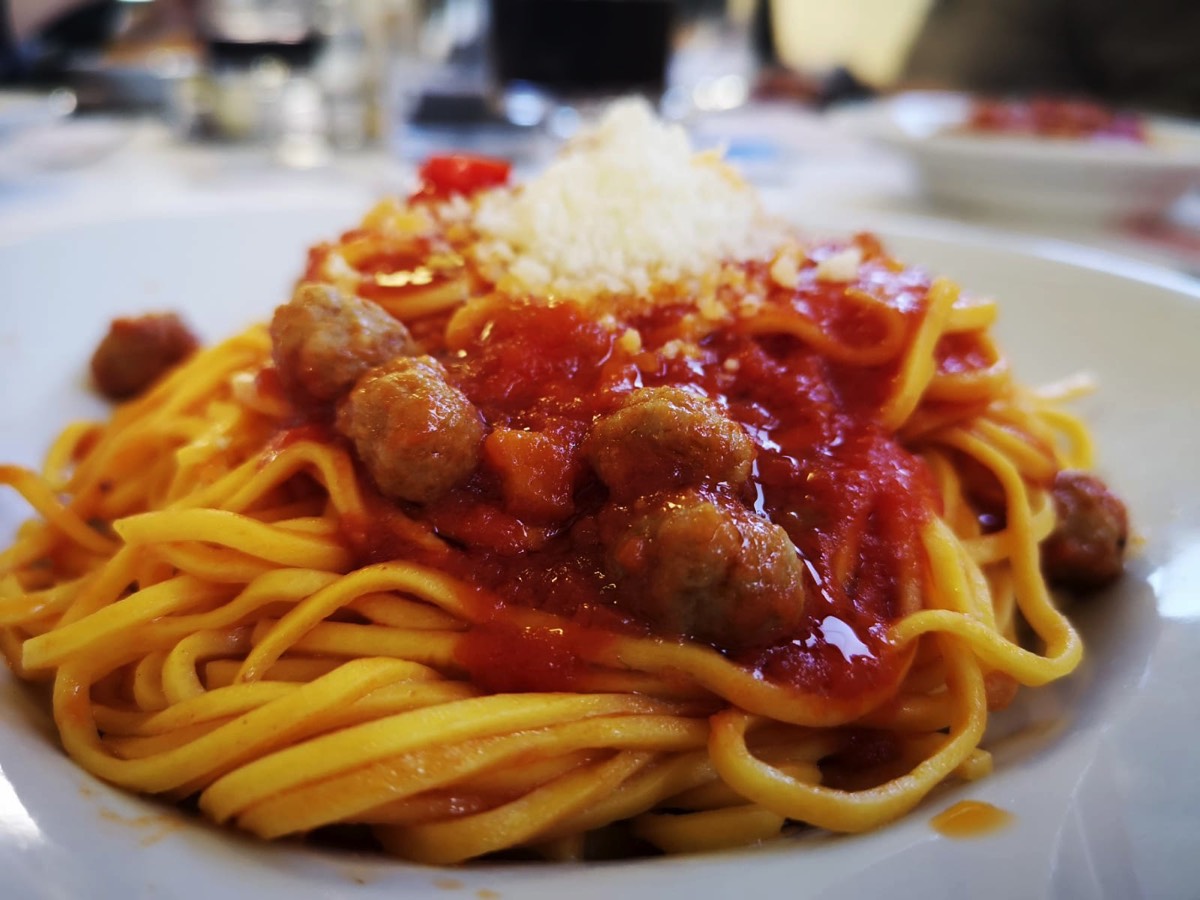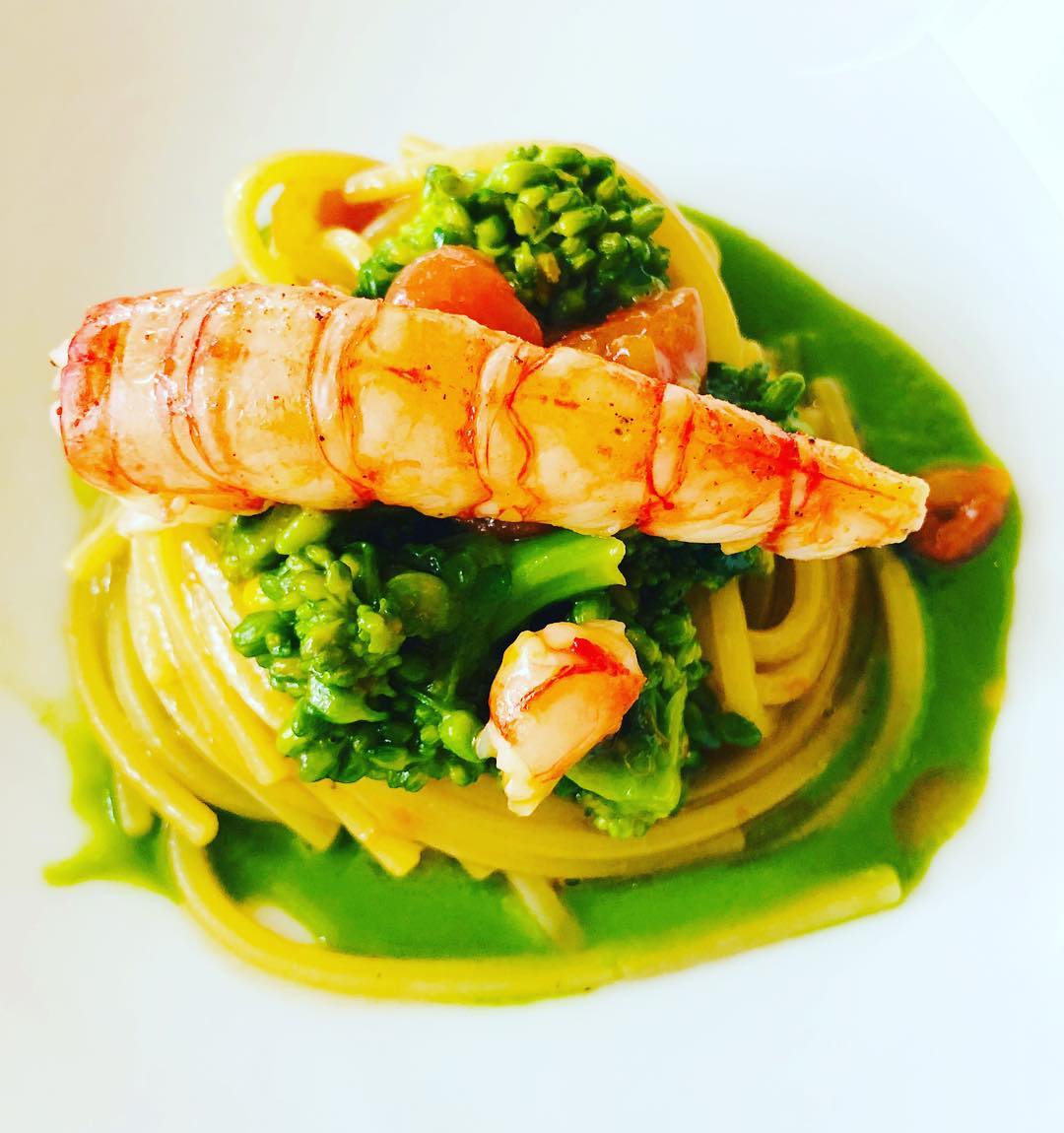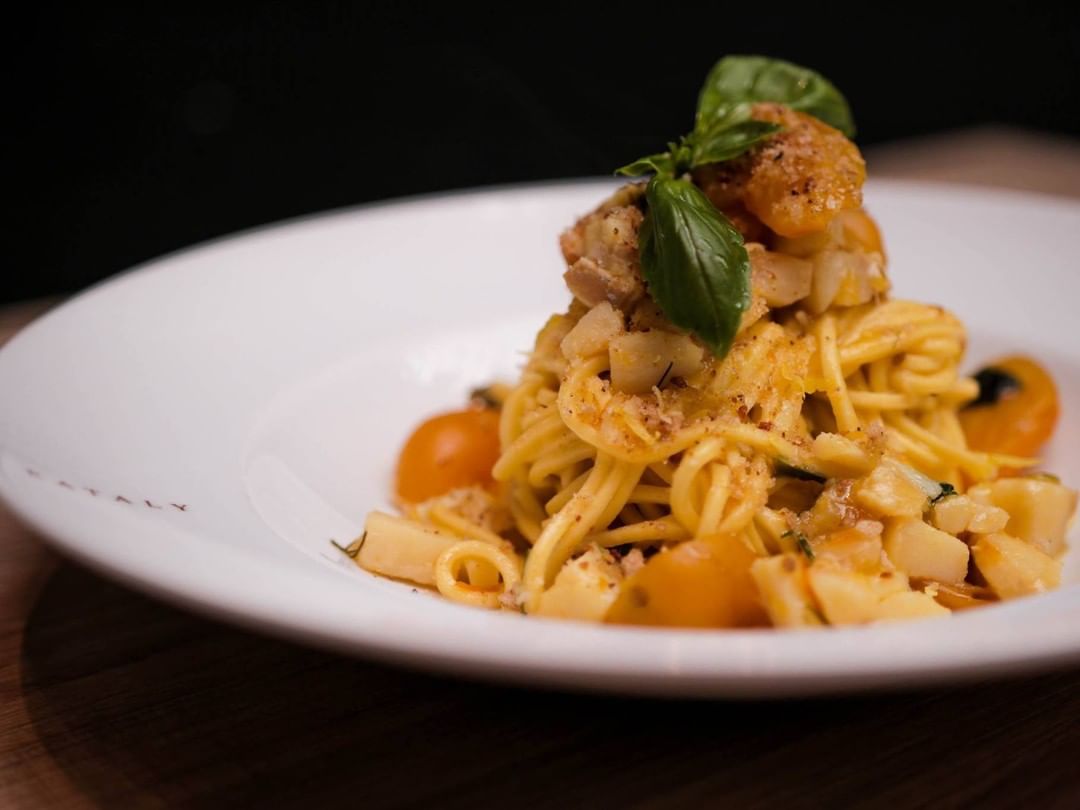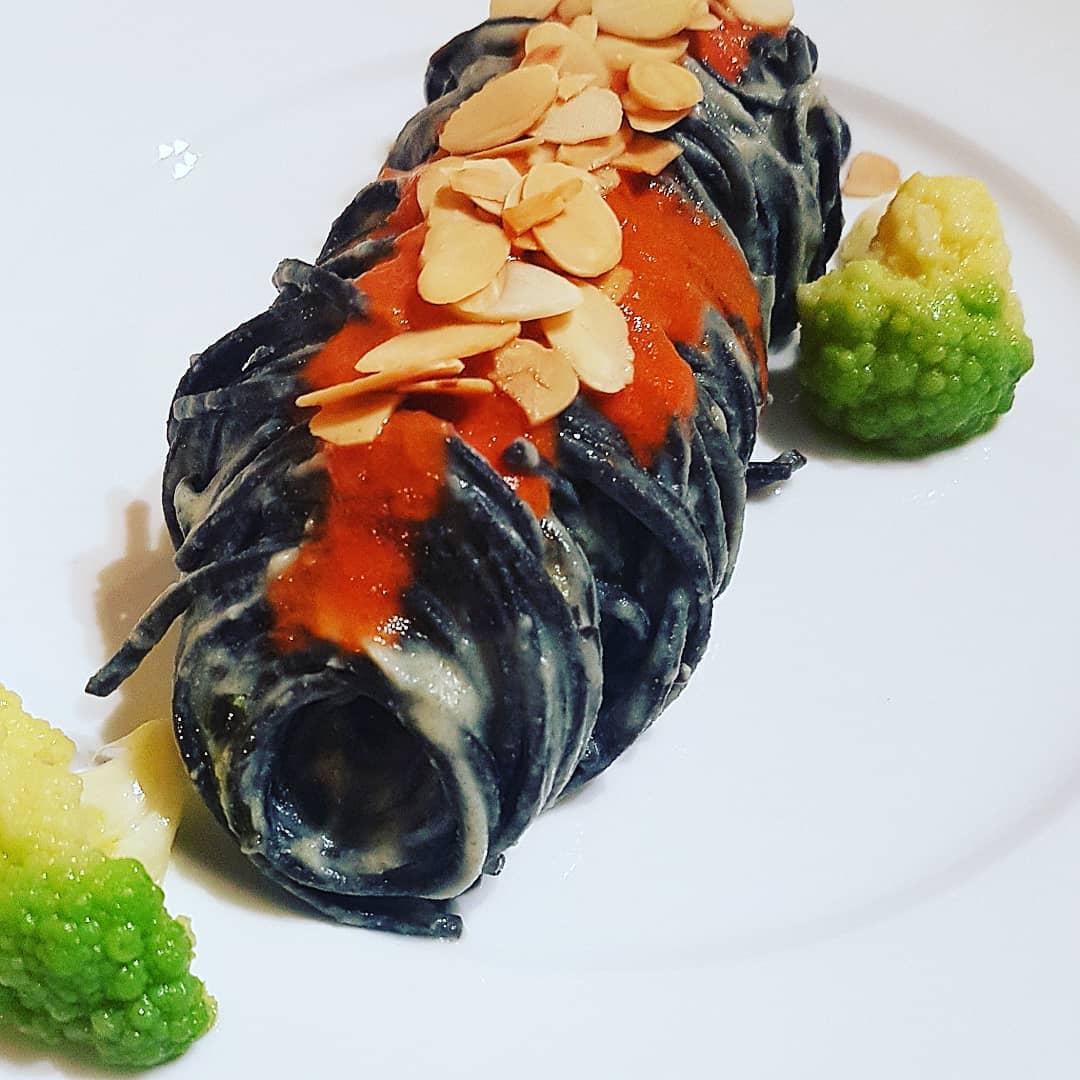Spaghetti alla Chitarra
Symbol of the cuisine of Abruzzo
Spaghetti alla chitarra, also known as maccheroni alla chitarra, is a variety of egg pasta typical of the Abruzzo region in Italy, with a square cross section about 2–3 mm thick.
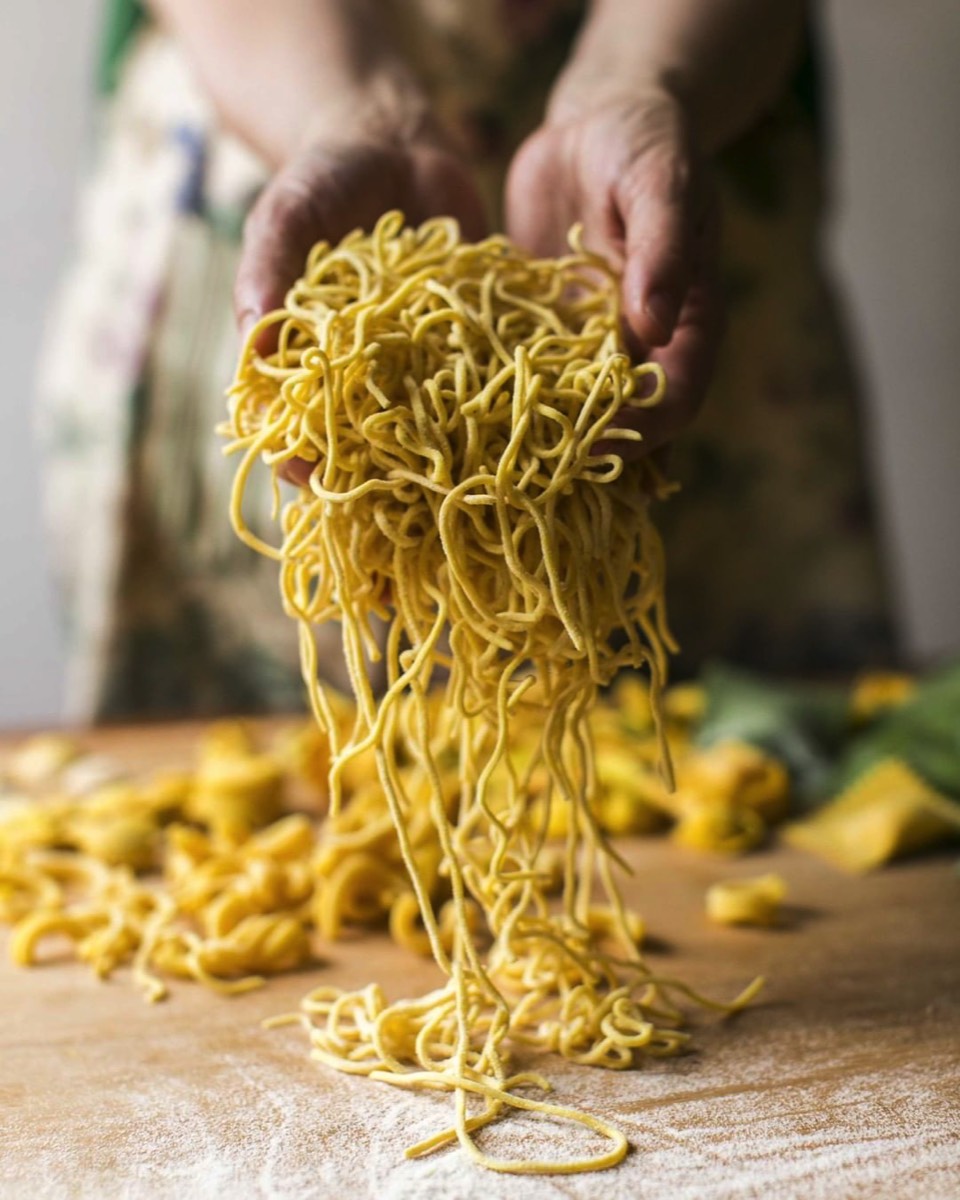
Symbol of the cuisine of Abruzzo, spaghetti alla chitarra “guitar spaghetti”, are also known in Abruzzo's dialect as "maccarun", or maccheroni alla chitarra. Although maccheroni are usually thought of as a short pasta to English speakers, in this case we are talking long noodles, similar to spaghetti or linguine, but square-sided. And the reference to the guitar? It comes from the traditional implement used to make these noodles -- a large, rectangular wooden frame, with numerous thin wires stretched across the long side, it looks, well, rather like a stringed instrument.
The pasta dough made of flour (or semolina) and eggs is rolled into a not too thin, long, rectangular sheet and then placed on top of the “guitar” frame. A rolling pin is then pushed over the top, forcing the pasta sheet through the wires, which cut the pasta into perfectly shaped noodles with a square section. If any of the pasta is left hanging on to the guitar, a simple strum across the wires with a finger helps to loosen them.
Age-old versions of this pasta included highly prized saffron in the pasta dough, infused in the egg before mixing with flour. In fact, the local saffron from Aquila is famous in Italy and features in many of the region's dishes, particularly with pasta or potatoes.
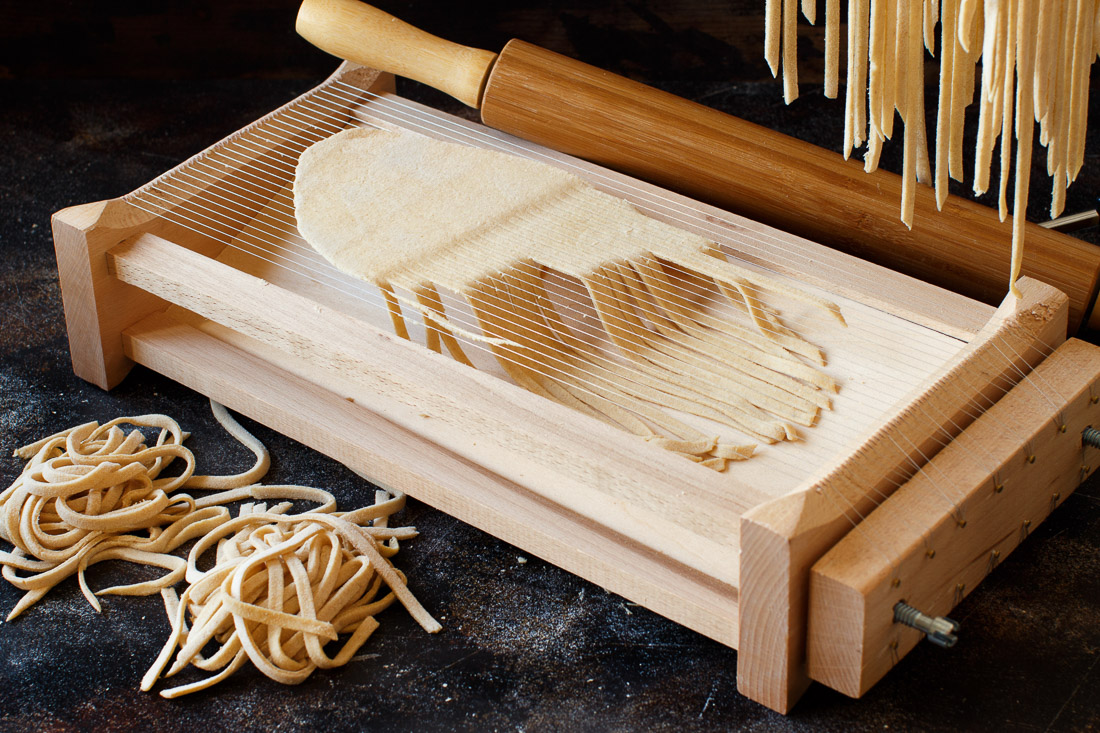
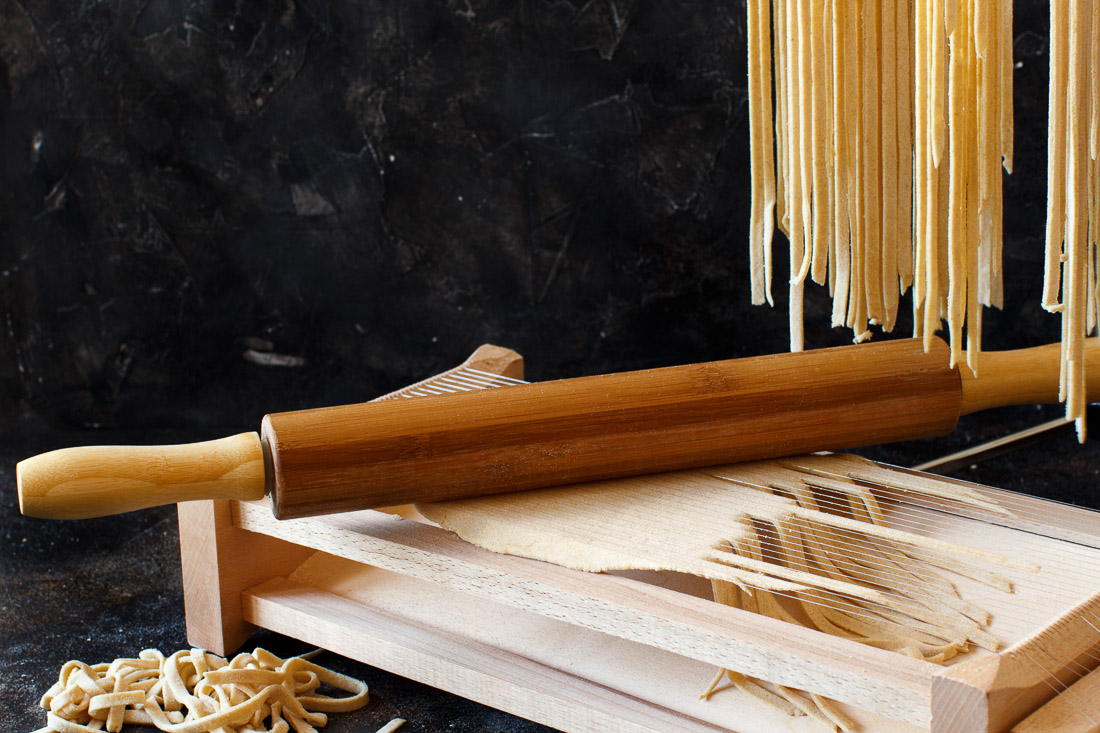
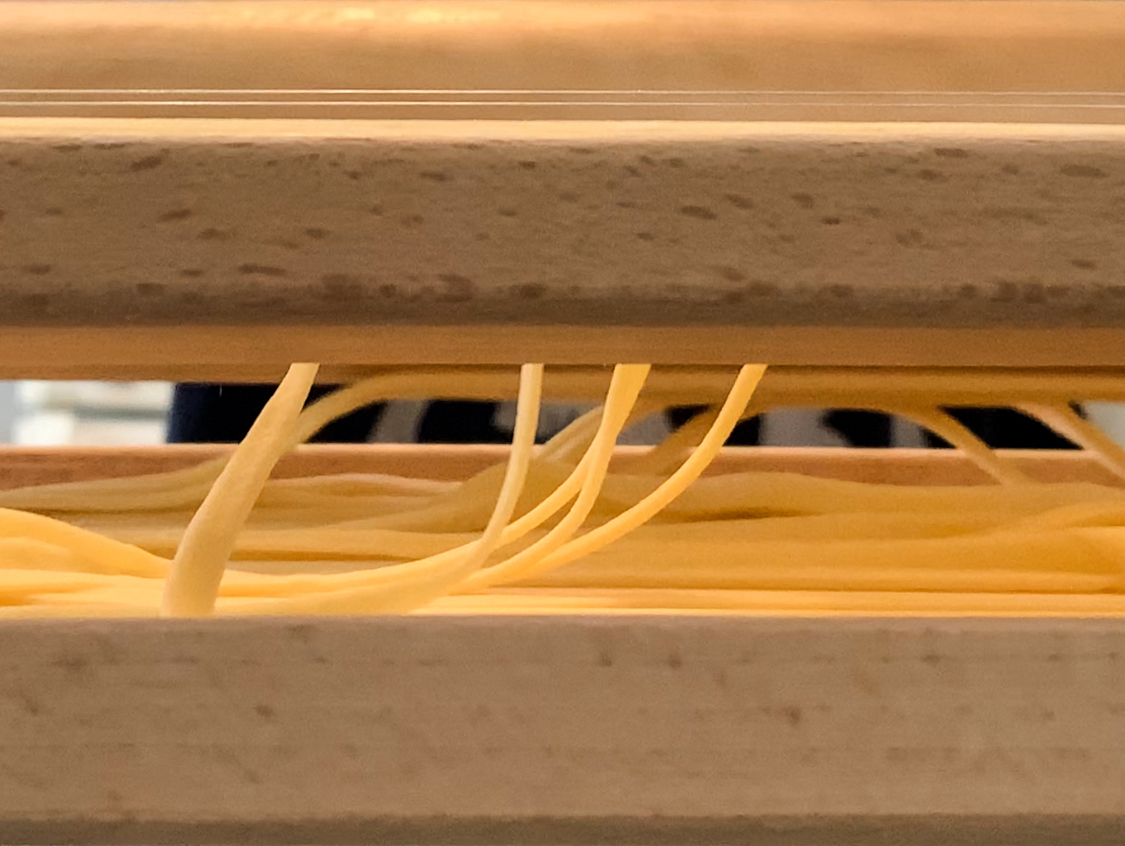
Spaghetti is a long, thin, solid, cylindrical pasta, typically made from durum wheat semolina. It is a staple food of traditional Italian cuisine. Like other pasta, spaghetti is made of milled wheat and water and sometimes enriched with vitamins and minerals.
The two common ways to make pasta is industrial and home made. The first industrial production of pasta occurred in Naples in the early 15th century. The site was chosen for its naturally fluctuating temperatures, sometimes as much as four times a day, which provided the hot and cold temperatures necessary for drying. Mechanical drying was not invented until 1800.
Spaghetti alla chitarra is a pasta that calls for a bit of bite to it as it needs some strength to carry the hearty, rich sauces it usually accompanies -- chunky ragu, particularly made from young lamb, a staple in Abruzzo's cuisine, or, like this one below, a trilogy of pork, veal and lamb. Or perhaps a red pepper sugo. While simple, traditional and tied to the land, the food of this mountainous region is incredibly hearty and tasty and this pasta dish is just one excellent example.
